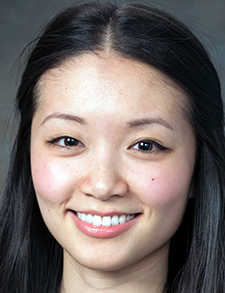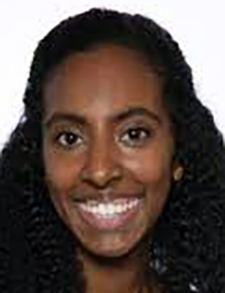Experts Say Racism a Too-common Factor in Care, and Offer Fixes
 Saying that structural racism permeates more clinical situations than hospitalists are typically aware of, a panel of speakers at SHM Converge in March offered a framework that physicians can use to boost awareness of this pitfall and, in as little as five minutes, help them work toward solutions and better care.
Saying that structural racism permeates more clinical situations than hospitalists are typically aware of, a panel of speakers at SHM Converge in March offered a framework that physicians can use to boost awareness of this pitfall and, in as little as five minutes, help them work toward solutions and better care.

Dr. Wang
Structural racism—how racism accumulates across institutions as the result of individual beliefs and organizations’ practices—can easily be overlooked during the daily grind, but it can come at the cost of care, said Samantha Wang, MD, clinical assistant professor of medicine at Stanford University in Stanford, Calif.
“Medicine is not protected against racism,” she said. “Instead, it is an institution for structural racism.”
Educators need to spend more time bringing the issue to the attention of students, but this is done too infrequently, she said.
“As educators, we talk about poverty, but how often do we talk about oppression?” she said. “We talk about race—we don’t talk about racism. We talk about sex, but we don’t talk about sexism. We talk about homosexuality and transsexuality, but how often are we talking about homophobia and transphobia?”
Lack of time and lack of expertise are commonly cited barriers to this line of teaching, she said. And physician educators often say they don’t even know how to begin.
At Stanford, experts created a framework—called the “5-Minute Moment for Racial Justice Framework”—to develop teaching moments, along with a related case curriculum. When an educator encounters an opportunity to discuss racial justice in clinical decision making, they can use the framework, Dr. Wang said. With their learners, educators will discuss the context of a clinical situation, what the current standard of clinical care is, and how it may be racially unjust, the historical narrative that laid the groundwork for the problem, health disparities, and steps to take to practice more equitably.
In one case, a 14-year-old Black female with lupus has had several days of hematuria and urinary complement, and a renal biopsy is obtained. Lupus nephritis is diagnosed with a concern for end-stage kidney disease (ESKD). In evaluating the patient for ESKD and renal transplant eligibility, the nephrologist looks at the race-corrected eGFR.
To understand how racism might be affecting patient care in this case, educators can turn to the 5-Minute framework, and its five components.

Dr. Dali
The context of this case—said Salma Dali, MD, a former resident at Stanford and now a fellow in pediatrics at the University of California, San Francisco—is that race correction is used for many clinical calculators, including the eGFR calculator.
But, Dr. Dali said. “It is important to be aware of how race correction affects patients so that we can provide more equitable care.”
The current standard is that kidney function is estimated by the eGFR, which is calculated using the serum creatinine. But values reported for African American eGFRs are 21% higher after a race correction is applied.
The historical narrative is that “racial essentialism”—the notion that our socially constructed racial categories reflect inherent biological differences—was at play in the creation of this eGFR race correction. In a randomized controlled trial called the Modification of Diet in Renal Disease Study—which looked at the effect of a protein-restricted diet on renal disease—researchers saw that Black patients had higher creatinine values than white patients. So they used a race correction that allowed them to more easily estimate the eGFR, attributing this to the idea that African Americans have a higher muscle mass than whites—even though the study didn’t measure muscle mass, and no studies since have shown a relationship between race and muscle mass, Dr. Dali said.
With an eGFR cutoff of 30 for referral to a nephrologist and a cut-off of 20 for renal transplant evaluation, the eGFR can have big effects on the medical care a patient receives, Dr. Dali said.
Given this, the “disparities” portion of the framework becomes clear, she said.
“If we were to eliminate race correction, 31,000 more Black patients would qualify for evaluation for renal transplant,” she said.
The steps to equity are changes to the way these calculators are used.
“Clinical calculators should not be based on the assumption that there are genetic differences across races,” Dr. Dali said. In fact, many institutions have eliminated race correction for the eGFR, using race-neutral tests such as cystatin C instead, she noted.
Another case involved a 15-month-old Black male with viral bronchiolitis, who’d presented two days earlier with cough and fever with an oxygen saturation of 93%. The decision to admit to the hospital depends on her oxygen saturation level.
Under the framework, the context of the case—said Kevin Chi, MD, clinical assistant professor at Stanford University in Stanford, Calif.—is that the pulse oximeter is widely used to assess hypoxia, but it has been found to have less accurate readings for those with dark skin tones.
The current standard is that the oximeter estimates oxygen levels by detecting changes in light absorption—light is emitted on one side of the finger, with photodetectors on the other side. But variables including pigmentation can affect light absorption.
The historical narrative for this case, Dr. Chi said, is that it wasn’t until the early 1990s that the U.S. Food and Drug Administration required representation of more than just white males in studies evaluating medical devices.
The disparity is that occult hypoxemia was three times more likely in Black patients than white patients, Dr. Chi said. This can have huge implications for care if hypoxemia isn’t detected, he said.
“Imagine we have a patient and occult hypoxemia is the reason why the emergency room triages them to a different level of acuity,” he said. “They wait longer in the emergency room, they’re waiting longer to get treatment.” Or, if the patient is admitted, maybe they’re discharged too soon, he said.
For better equity, he said, clinicians and the medical system have to understand that racism encompasses even medical devices.
“Recognize that reliance on the pulse oximeter to guide clinical decisions may place patients with darker skin at a higher risk of hypoxemia,” he said.
Dr. Chi said that the 5-Minute Framework should be seen as a practical starting point for considering how racism can affect care.
“It’s not to make the assumption that racism is involved in every decision that we make,” he said, “but it is a kind of healthy reflection for us to start to ingrain into our practice—of taking stock, pausing, and thinking about what are all the possible areas of bias that can be introduced to that patient.”
Tom Collins is a medical writer in Florida.